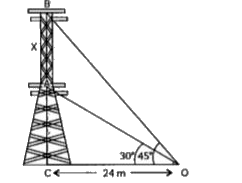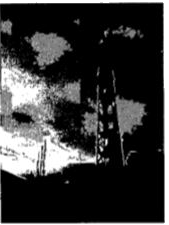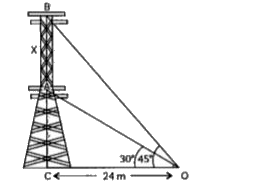An example of Full Duplex communication channel.
A. Radio Broadcasting
B. Television Broadcasting
C. Walkie-Talkie
D. Telephone conversation
D
A
C
B
The correct Answer is:A
Similar Questions
Perhaps, the most commonly used mode of communication involves use of free space as a communication channel between transmitter and receiver. The various possible modes of using of free space have been described below
Ground wave communication : This mode is used for low frequency as at high frequency, losses become large. This is useful for distance of the order of 1 km.
Space wave communication: The signals are transmitted directly from transmitter to receiver. There is no limit to upper frequency, but its range is limited to few hundred kilometers. The range depends on the height of transmitting antenna
Sky wave communication : The signals are sent towards sky They are reflected back towards earth by ionosphere. Its range can be above 500 km. But, very high frequencies (above 10 MHz) are not reflected back. Satellite communication: The signals that cannot be reflected back by ionosphere are reflected back by satellite. Moon is a passive satellite of earth.
The frequency range allotted to FM radio broadcast is 88 MHz to 108 MHz. Which of the following communication channels can be used for its transmission?
A. Sky wave communication only
B. Space wave communication only
C. Satellite communication only
D. Either space wave communication or satellite communication
View SolutionRadio towers are typically tall structures designed to support antennas for tele communications and broadcasting, including television. There are 2 main types: guyed and self-supporting structures.
They are among the tallest human-made structures. Masts are often named after the broadcasting organizations that originally built them or currently use them.

On a similar concept, a radio - station tower was built in two sections A and B. From a point 24 m from the base of the tower, the angle of elevation of the top of section A is 30∘ and the angle of elevation of the top of section B is 45∘).

The height of the tower is
View Solution
Knowledge Check
Radio towers are typically tall structures designed to support antennas for tele communications and broadcasting, including television. There are 2 main types: guyed and self-supporting structures.
They are among the tallest human-made structures. Masts are often named after the broadcasting organizations that originally built them or currently use them.

On a similar concept, a radio - station tower was built in two sections A and B. From a point 24 m from the base of the tower, the angle of elevation of the top of section A is 30∘ and the angle of elevation of the top of section B is 45∘).

The height of the section B isA5.4mB3.3mC6.16mD10.16mRadio towers are typically tall structures designed to support antennas for tele communications and broadcasting, including television. There are 2 main types: guyed and self-supporting structures.
They are among the tallest human-made structures. Masts are often named after the broadcasting organizations that originally built them or currently use them.

On a similar concept, a radio - station tower was built in two sections A and B. From a point 24 m from the base of the tower, the angle of elevation of the top of section A is 30∘ and the angle of elevation of the top of section B is 45∘).

On the basis of the above information, answer any four of the following question:
The length of the wire structure from the point o to the top of section B isA11.8 mB14.6 mC27.7 mD33.84 mRadio towers are typically tall structures designed to support antennas for tele communications and broadcasting, including television. There are 2 main types: guyed and self-supporting structures.
They are among the tallest human-made structures. Masts are often named after the broadcasting organizations that originally built them or currently use them.

On a similar concept, a radio - station tower was built in two sections A and B. From a point 24 m from the base of the tower, the angle of elevation of the top of section A is 30∘ and the angle of elevation of the top of section B is 45∘).

The height of the section A isA13.84mB14.6mC16.7mD34.6m
Radio towers are typically tall structures designed to support antennas for tele communications and broadcasting, including television. There are 2 main types: guyed and self-supporting structures.
They are among the tallest human-made structures. Mosts are often named after the broadcasting organizations that originally built them or currently use them.

On a similar concept, a radio - station tower was built in two sections A and B. From a point 24 m from the base of the tower, the angle of elevation of the top of section A is 30∘ and the angle of elevation of the top of section B is 45∘).

On the basis of the above information, answer any four of the following question:
The length of the wire structure from the point to the top of section A is
View SolutionThe examples of broadcast are
(A) radio
(B) television
(C) telephony
(D) internet
View SolutionWhich of the following form SiO2 is used in modern radio and television broadcasting and mobile radio communications?
View SolutionArrange the following communication frequency bands in the increasing order of frequencies
a. AM broadcast
b. Cellular mobile radio
c. FM broadcast
d. Television UHF
e Satellite communication
View SolutionEver since humans appeared on the earth, they have used different means of communication. But, the pace of change, has been rapid in modern times. Long distance communication is far easier without physical movement of the communicator or receiver. Personal communication and mass communication including television, radio, press, films, etc. are the major means of communication in the country. The Indian postal network is the largest in the world. It handles parcels as well as personal written communications. Cards and envelopes are consideredd first-class mail and are airlifted between stations covering both land and air. The second-class mail includes book packets, registered newspapers and periodicals. They are carried by surface mail, covering land and water transport. To facilitate quick delivery of mails in large towns and cities, six mail channels have been introduced recently. They are called Rajdhani Channel, Metro Channel, Green Channel, Business Channel, Bulk Mail Channel and Periodical Channel.
Which mail channel is introduced recently by Indian Postal Networks?
View Solution
